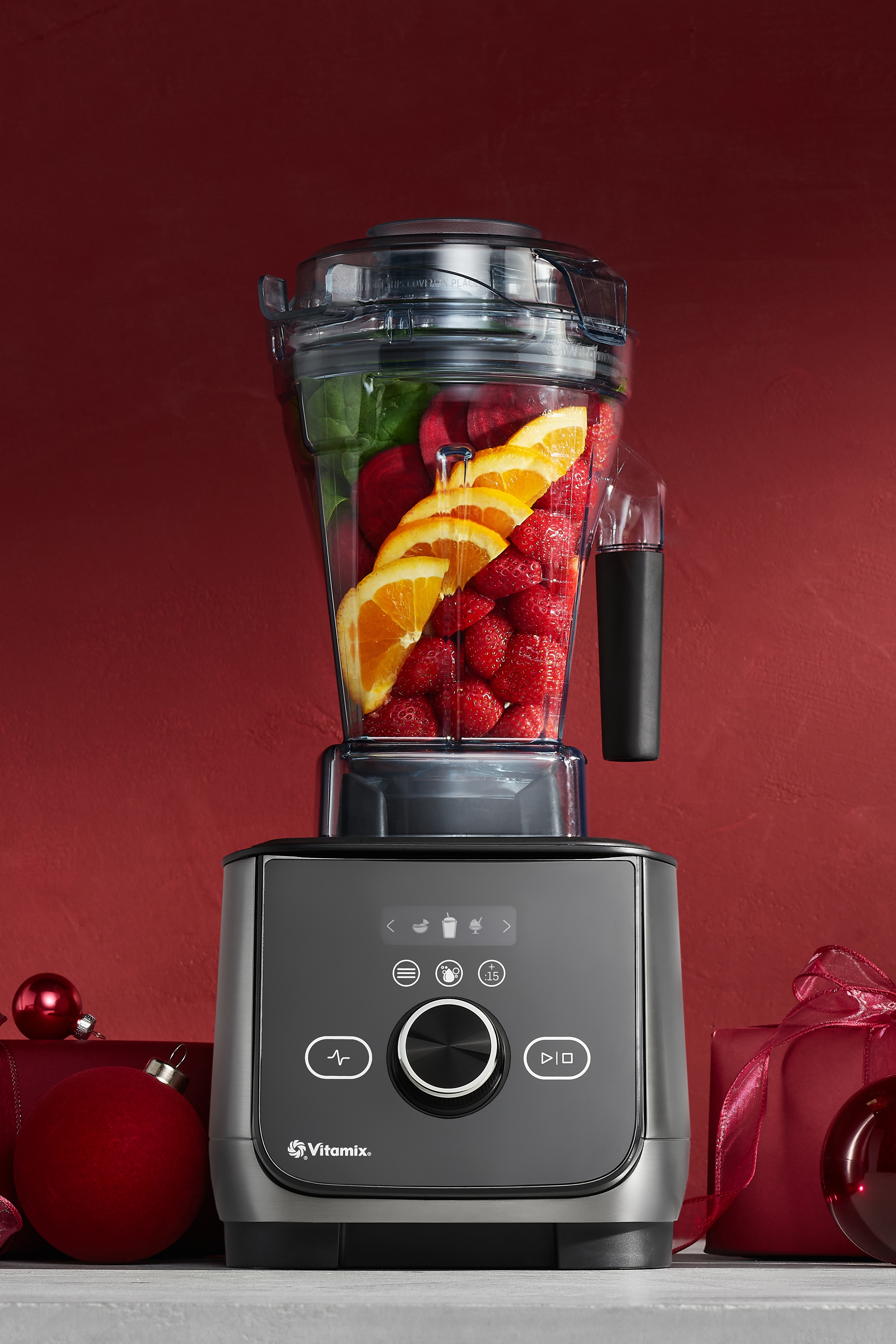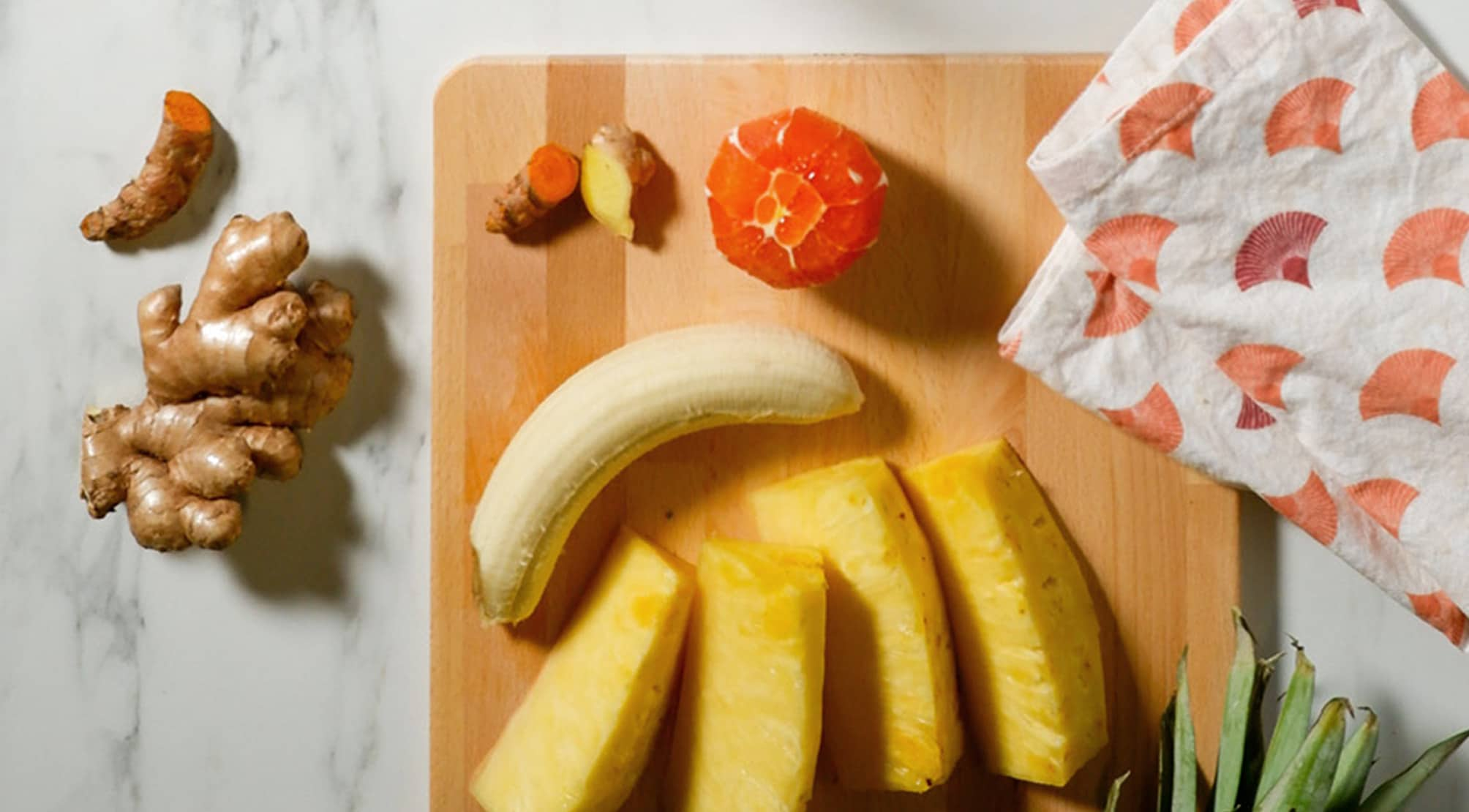There’s a lot to consider when selecting smoothie ingredients. Each element can affect the smoothie’s flavor, texture, nutritional value, and even color. This guide will help you choose ingredients that, when blended together, are transformed into a delicious, healthy smoothie.
How to Select the Best Produce

Every year, the Environmental Working Group (EWG) releases two lists produce with the highest and lowest levels of pesticides and produce.
Dirty Dozen
It's recommended that you buy organic versions of the following produce to limit your exposure to pesticides:
1. Strawberries 7. Peaches
2. Spinich 8. Cherries
3. Kale 9. Pears
4. Nectarines 10. Tomatoes
5. Apples 11. Celery
6. Grapes 12. Potatoes
Clean Fifteen
The following foods tend to have the least amount of pesticides on them. If you prefer organic, that’s fine, but if you’re watching your budget, consider going conventional on these. However, remember that regardless of which type you buy, all produce should be thoroughly cleaned before cutting, eating, and cooking.
1. Avacados* 8. Asparagus
2. Sweet Corn 9. Cauliflower
3. Pineapple 10. Cantaloupes
4. Sweet Peas (frozen) 11. Broccoli
5. Onions 12. Mushrooms
6. Papayas* 13. Honeydew Melons
7. Eggplants
*Sweet corn and papayas are sometimes made from genetically modified seeds. While it’s a small percentage, if you prefer not to eat GMOs, then it’s best to buy organic versions of these foods.
Drink the Rainbow
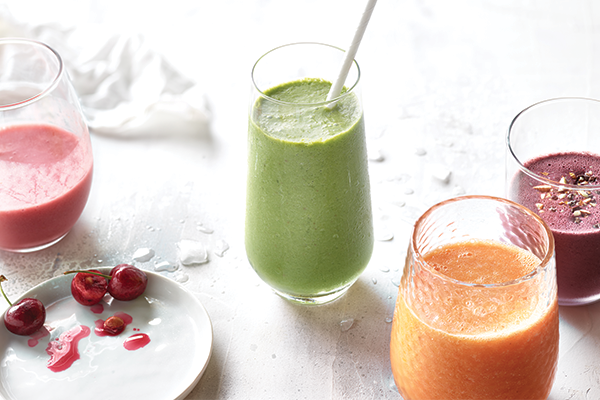
Nutritionists everywhere stress the importance of eating foods across the colors pectrum to ensure you get the broadest range of nutrients. If you’re looking to create your own smoothies, here are some great options:
Red Fruits:
red apples, red pears, red grapes, blood oranges, cherries, cranberries, redgrapes, raspberries, strawberries, pomegranates, watermelon, tomatoes
Red Vegetables:
radishes, red peppers, beets, rhubarb
Orange and Yellow Fruits:
oranges, tangerines, apricots, peaches, nectarines cantaloupe, grapefruit, mangoes, papayas, yellow apples, yellow pears, pineapple, golden kiwis, lemons, pumpkin
Orange and Yellow Vegetables:
yellow peppers, carrots, yellow beets, sweet potatoes
Green Fruits:
green apples, green grapes, kiwi, limes, avocados, honeydew
Green Vegetables:
broccoli, celery, cucumbers, leafy greens, green peppers, kale, cabbage, spinach
Blue and Purple Fruits:
blueberries, blackberries, elderberries, acai berries, concord grapes, plums
Blue and Purple Vegetables:
purple cabbage, purple cauliflower, purple carrots
How to Create Your Own Perfect Smoothie
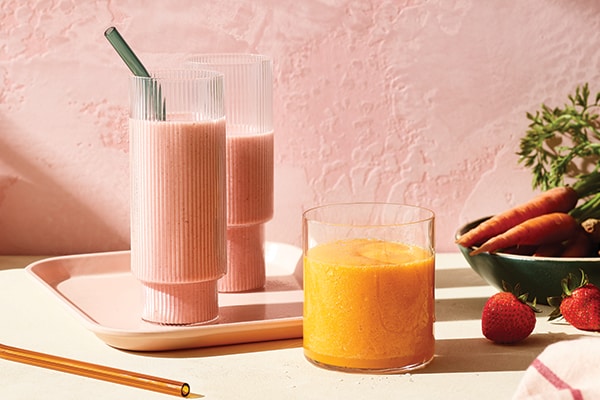
Sometimes you can’t—or don’t want to—follow a recipe exactly, and sometimes you want to let your creativity fly and come up with a drink that’s completely your own. These tips will help make sure your drink tastes great no matter what.
The Right Ratio
Your smoothie should always start with one full cup of liquid. For fruit-based smoothies, pick two fruits and add one cup of each. If adding veggies, use one cup total. Consider kale, spinach, broccoli, arugula, and other greens. Another option is to add half a raw beet, which will turn your drink a beautiful color. For a colder, thicker smoothie, add a few ice cubes and for Blending Cups, divide these measurements in half.
Necessary Substitutions
Whether you’re allergic or sensitive, the fruit you were planning to use went bad, or you just don’t like the taste of something, substitutions are a great option. However, keep in mind that you want to substitute foods of similar textures, such as using an apple instead of a pear. If you use watermelon instead of a pear, the added liquid will change the outcome of the smoothie.
Speaking of Liquids...
It’s fine to substitute liquids, but before you do, take a step back and think about whether other ingredients need to change. You want to make sure the flavors work together. For example, a smoothie with apple juice would be great with cinnamon, but if you switch to orange juice, the cinnamon won’t taste right. Also, keep in mind that different liquids change the nutritional content. For example, juices and some dairy and non-dairy products may add more sugar. Of course, you can always just substitute water!
Sugar and Spice and Everything Nice
If you want to make your smoothie or juice a little sweeter, consider adding honey, dates, or pure maple syrup. However, think about the amount of fruit inthe drink and the level of sweetness they provide before deciding how much extra sweetener to add. Some things to consider are that a ripe banana will be sweeter than a green one, different apples provide different levels of sweetness or tartness, and in-season fruits tend to be sweeter than out-of-season ones. If you want to play with different flavors, spices are a great way to mix things up. Consider cinnamon, nutmeg, vanilla, cocoa, or even a leaf of fresh basil. You can experiment with texture as well by adding seeds, nuts, or whole oats.
Pump Up the Protein
There are lots of ways to add more protein, such as protein powders, nut butters, seeds, dairy, and soy.
Fresh vs. Frozen
If a recipe calls for frozen fruit but you’d rather use fresh, that’s perfectly fine. Just add some ice cubes to maintain the original recipe’s texture. The only downside is that this may slightly dilute the flavor.
The Healing Power of Food
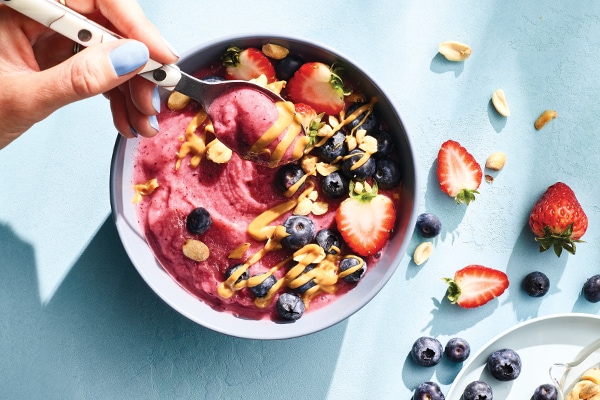
We’re passionate about fresh, natural ingredients because we know the health benefits that come from eating a variety of fresh, natural foods. We also know that in order to maintain this type of eating, your food has to taste good! That's why we create smoothie recipes that strike a balance between tasty and good for you.
But before we get to that, let’s discuss two important categories of foods—whole foods and superfoods. Whole foods are fresh and minimally processed, which means they have more nutrients than their processed counterparts. Superfoods are low-calorie foods filled with essential nutrients (ones we need but our bodies can’t make) and antioxidants.
Keep in mind that even though these foods are great for you, you do want to eatas many different whole and superfoods as you can, adjust for your particular needs, and remember that moderation is still important.
So which foods are best to include in your healthy smoothies and whole-food juices? We recommend the following:
Oats
Oats are high in high-quality proteins, dietary fiber, pantothenic acid, thiamin, manganese, magnesium, phosphorus, zinc, iron, unsaturated fat, and phytonutrients.
Brown Rice Protein Powder or Milk
A healthier option than its white-colored sibling, brown rice has more dietary fiber and manganese. It also provides you with selenium, magnesium, niacin, thiamine, pantothenic acid, and pyridoxine.
Flaxseed
Flaxseed’s high in omega-3 fatty acids, important especially due to the high levels of omega-6 fatty acids in Western diets. It’s also the best source of lignans, important antioxidants. But the benefits don’t stop there. Flaxseed contains monounsaturated and polyunsaturated fats, manganese, vitamin B1, dietaryfiber, magnesium, tryptophan, phosphorus, and copper.
Spinach
Spinach is a powerhouse. It protects against some types of cancer, helps with cardiovascular and eye health, has lots of vitamin K that helps your bones, and is a good source of vegetable protein, too. It also provides you with manganese, folate, magnesium, iron, vitamin, C, vitamin E, dietary fiber, calcium, and potassium.
Cranberries
If you’re looking to boost your antioxidant intake, cranberries are one of the best options. They also have plenty of vitamin C, dietary fiber, manganese, vitamin E, and phytonutrients.
Blueberries
These don’t just make your juice or smoothie look pretty. One cup gives you 25% of your recommended daily serving of vitamin C.
Honey
Raw, unfiltered, local honey is the healthiest option when you’re looking to add some sweetness. While the exact nutrition varies, it includes all the B vitamins plus A, C, D, E, and K, minerals and trace elements, and magnesium. It also has antimicrobial and antibacterial benefits.
Substitutions and Add-Ins for a Health Benefits Boost
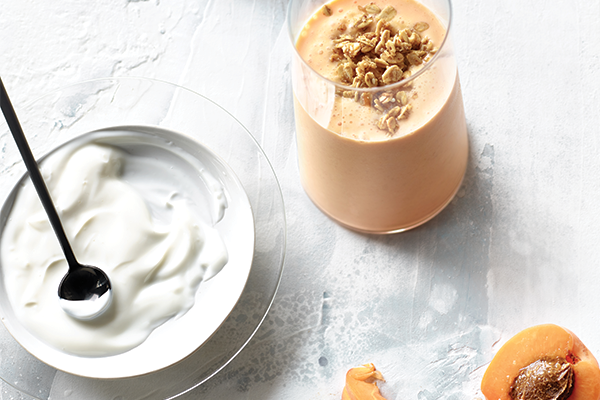
We think you'll love the recipes we create, but we also know everyone’s tastes and nutritional needs are different. If you’re looking to change things up a bit or sneak in some additional benefits, here’s what we recommend:
Acai:
Strong antioxidants and high in calcium. vitamin C, and heart-healthy fats
Almond Butter or Milk
Good source of protein, magnesium, manganese, vitamin E, antioxidants; helps control blood sugar, blood pressure, and cholesterol levels
Bee Pollen
Considered medicine by Germany’s Federal Ministry of Health, has over 250 nutrients plus antioxidants, reduces inflammation (don’t eat if allergic to pollen or bee stings)
Cacao Nibs
Toss on top of your smoothie or smoothie bowl for a crunchy, chocolatey boost
Carob Powder
Added calcium, fiber, and antioxidants for a chocolatey flavor without the sugar or caffeine
Chia Seeds
Lots of fiber and protein that can help control blood sugar levels
Flaxseed
Contains protein, omega-3s, and fiber
Golden Berries
High in Vitamin A, low in sugar, taste ranges from tart to sweet
Greek Yogurt (Plain)
Good source of protein, probiotics, calcium, B-12, and potassium
Guarana
Added caffeine with a fruity flavor
Hemp Seeds
Vegan-friendly protein that adds a little nutty taste
Milk (Plain, Low Fat)
Wide variety of nutrients including protein, calcium, B vitamins, vitamins A and D, potassium, phosphorus, selenium, zinc, and omega-3s
Fortified Oat Milk
B vitamins, calcium, phosphorus, and vitamins D and A
Pea Protein
A gluten-free, lactose-free protein option rich in iron
Peanut Butter
Protein, healthy fats, vitamins E, B3, B6, copper, manganese, magnesium, and folate
Soy (Powder, Yogurt, Milk, Tofu)
Protein, copper, iron, manganese, and phosphorus, good for cardiovascular health, should be eaten with caution (talk to your doctor)
Spirulina
Blue-green algae with lots of antioxidants, iron, B vitamins, and vitamins C, D, and E, copper, about 4 grams of protein, and at least small amounts of all the other nutrients you need; beneficial to cholesterol levels and reduces allergic rhinitis symptoms
Sunflower Seeds
Shelled seeds add selenium, magnesium, and copper
Turmeric
Golden-orange root or powder that helps with inflammation and has a somewhat peppery flavor
Wheat germ
Lots of fiber
Whey Protein
Helps build muscles, recover from exercise, and with weight management; supports skeletal and immune systems; avoid if you have a milk allergy
Ready for more smoothie tips? Check out Part 2: All About Blending
